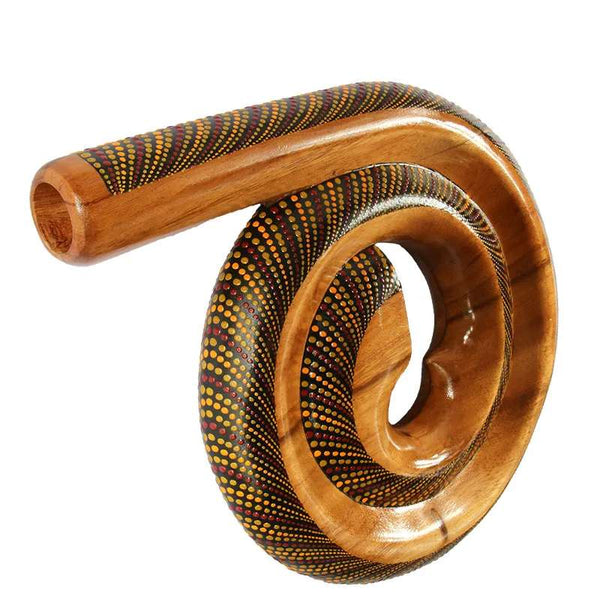The ancestry of the aboriginal culture and the transcendental power of its ritualistic musical instruments are evidenced and valued in contemporary times through the didgeridoo . The rustic style that constitutes ethnic art in a unique way, together with the rhythmic sound of a drone or buzzing that it provides, makes it a versatile piece for shamanic meditation or adding beauty and personality to interior decoration .
Also called didjeridu and yidaki , this aboriginal wind instrument made from a hollow tree branch is the best known in the world, characterized by its simple acoustics and structure in eucalyptus, bamboo or ironwood with the shape of a straight trumpet, snail or snake , coated with wax, resined on the mouthpiece and personalized with colorful artistic painting.

Didgeridoo is one of the best known Aboriginal musical instruments in the world.
The origin of the didgeridoo remains unknown although it appears in the oral tradition of the YoIngu people that it appeared 40 thousand years ago, being as old as the aboriginal culture itself. Another fact that makes an exact definition impossible is the research of historian George Chaloupka, a specialist in rock art in Australia, who claims that there are records of the presence of representations of the artifact in cave paintings in northern Australia that date from 1500 to 600 years.
The origin of the word that names the instrument is also uncertain, so that two hypotheses were raised: the first, based on common knowledge, is that didgeridoo refers to the sound emitted, being an onomatopoeia; while the second, supported by popular theory, the word derives from the Gaelic "black trumpeter".

The wind instrument comes from the aboriginal peoples of northern Australia, 1500 years ago.
Primitively used in traditional ritualistic ceremonies of Australian aborigines , the didgeridoo was integrated over time as a musical instrument of popular music genres such as world music and an instrument of meditative practices , inducing the state of “trance” by quieting the mind and taking your vibrations for the body to find balance.
There are five main types of sounds with varied techniques transmitted by an interpreter on this ancestral instrument , whose rhythmic and metrical structures are diversified by blowing, by air pressure resulting from that of the lips, by the position of the tongue or by breathing. They are defined in: drone , cadenced sound used in meditation ; toot , short or interval sounds; resonance , vibration that can be enhanced with an auxiliary object in the sound output; harmonics , which emphasize rhythm and vocalizations .

The rustic style of this instrument makes it a unique art for ethnic decorations.
The rustic and unique aesthetic of the wooden structure is enhanced by the ethnic style of handcrafted painting that adorns its exterior and adds to the didgeridoo's decorative character - bestowing visual interest on environments that are unobviously enriched by Aboriginal material culture . The particularities of this magical instrument demonstrate its countless ways of surprising, whether to harmonize the decoration or promote balance between body, mind and spirit.
Find the model that matches your essence in our arts and decorations store !
Namaste!
Milene Sousa - Art & Tune










